What is an IPO investment portfolio

An investment portfolio is a set of assets in which an investor has invested money. To minimize losses and increase returns, many investors create a diversified portfolio that consists of assets of different classes, such as volatile stocks and stable bonds.
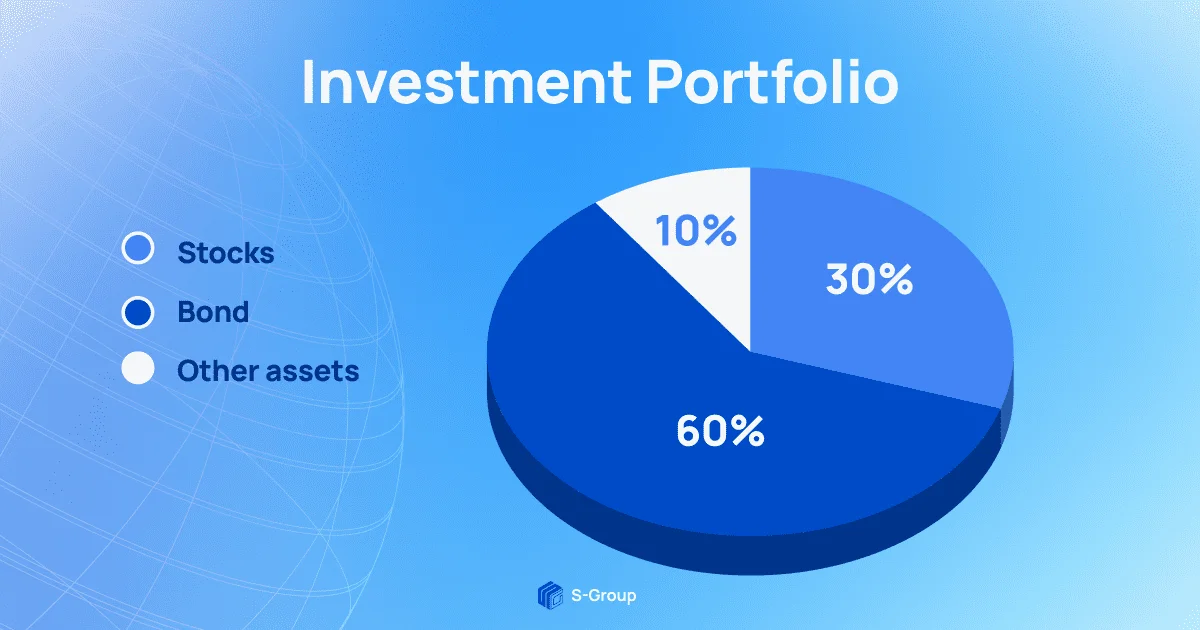
The chart shows an example of an investment portfolio. Most of it consists of bonds and stocks, as well as other assets. It could be real estate, oil, or cryptocurrency. Diversifying the portfolio gives you the opportunity to make money on the growth of stocks, if they rise, and reduce cash losses due to stable profits from bonds.
What assets an investment portfolio may consist of
The assets in an investment portfolio may differ from one another both in terms of their main characteristics and their level of risk. The higher the return on an asset, the riskier it is. The riskiest assets are stocks, futures, and cryptocurrencies; the least risky are stable and fixed-income bonds.
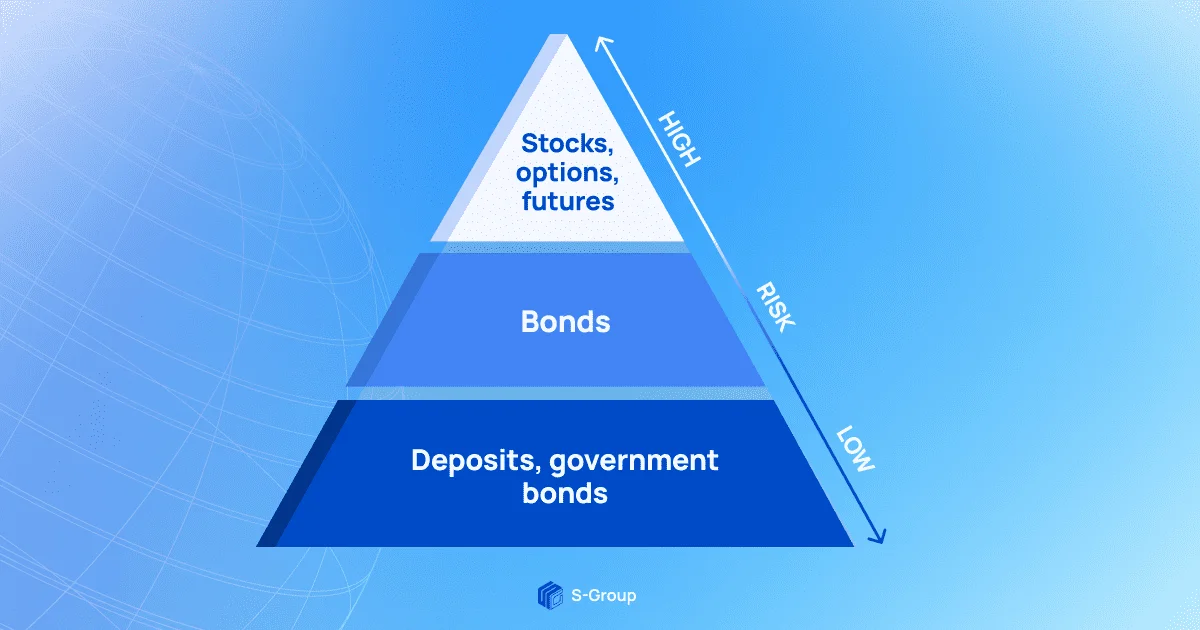
Stocks
Give the investor the right to receive a portion of the company's profits, dividends, or important management decisions. The amount of rights an investor has in a company depends on the type of stock he or she has purchased.
They may be common — giving the right to vote at shareholders' meetings, but not guaranteeing to receive dividends.
Or preference shares, which give the investor additional advantages. For example, higher dividends with a predetermined amount and priority in bankruptcy. That is, if the company goes bankrupt, holders of preferred shares get a piece of property after creditors and bondholders.
You can invest in stocks at Pre-IPO stage, when the company hasn't gone public yet, and during IPO when assets of the company are exhibited at the stock exchange and available for all comers.
Read more about stocks and their types here.
Bonds
Bonds are securities that resemble promissory notes. A company issues bonds to raise funds. When an investor buys assets, he or she lends the company a certain amount of money. The timing of when the company has to pay back the money and at what interest rate is spelled out in the document. Therefore, the investor knows exactly the date and the amount of profit he will get, if the organization does not go bankrupt.
The advantage of bonds is their stability and predictable income. That is why experienced investors recommend keeping at least 20% of bonds in your investment portfolio to minimize losses in case stocks fall.
Read more about bonds here.
Futures
An agreement to buy/sell an asset at a specified time and at a pre-determined price. The safety of the transaction is guaranteed by the exchange, which charges the buyer and the seller with a security deposit.
Cryptocurrency
Digital money that has no physical expression. The popularity of cryptocurrency is increasing all the time, so the number of those wishing to invest and make a profit is also increasing. The main advantage and at the same time disadvantage of cryptocurrency is the high volatility of the rate, on which you can both earn and suffer losses. The most popular coins for investment are considered to be Bitcoin, Ethereum, Tron, Binance Coin.
You can read more about cryptocurrencies here.
Real Estate
You can invest in residential, commercial, hotel and other types of real estate. An investor can make a profit by renting or reselling objects. The advantages of investing in real estate is a high growth potential of capitalization and low risk.
Types of investment portfolios
There are two classifications of investment portfolios: according to the level of risk and the term of investment.
According to the risk level, three types of investment portfolios are distinguished: conservative, aggressive, moderate.
Conservative
The least risky investment portfolio, which consists of stocks of large and well-known companies (“blue chips”) with large dividends, and bonds with fixed income. The goal of a conservative portfolio is to preserve profits and provide a stable, moderate income. This option is suitable for beginners because of the low risks and not requiring investment knowledge and skills.
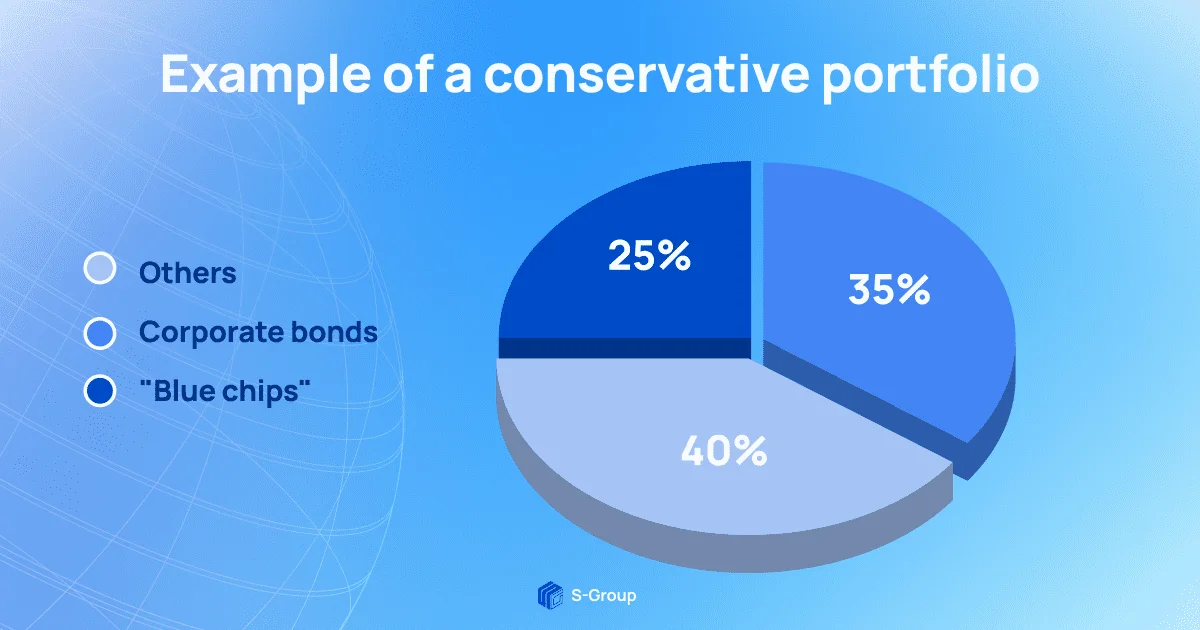
Aggressive
More risky, but also more profitable portfolio. Most of the investments in such a portfolio are shares of small and medium-sized companies, as well as futures. To support the balance and minimize risks, you can add blue chips. Aggressive portfolio suits experienced investors who are not afraid to take risks, understand market trends and can forecast them.
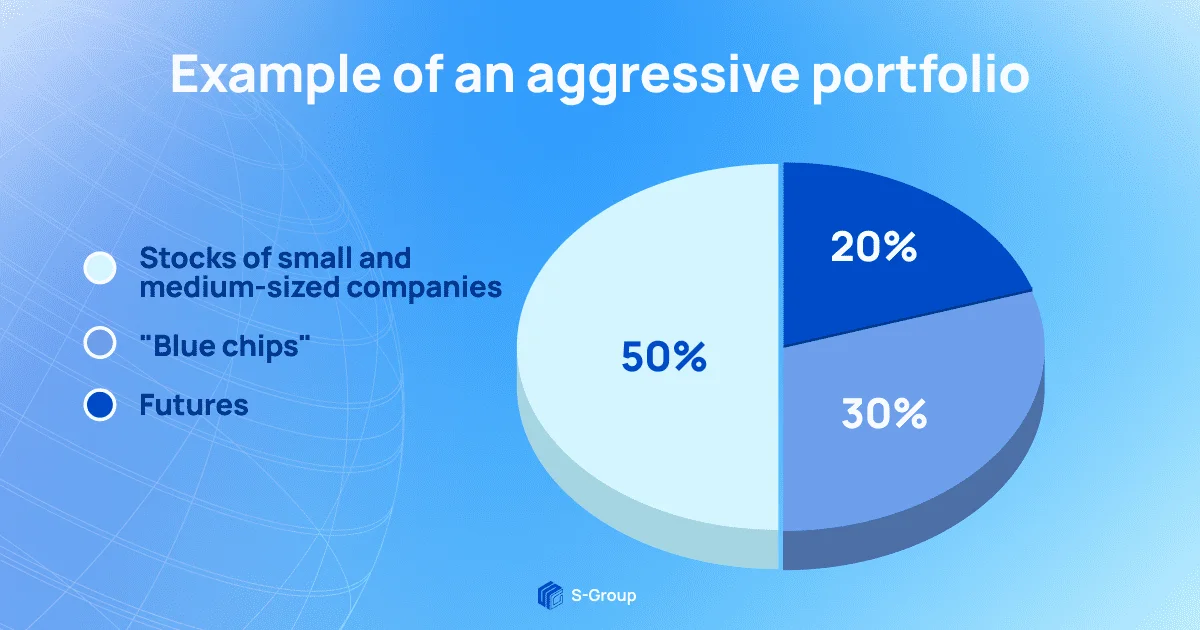
Moderate
A compromise version that may contain stable assets and volatile ones. Capital gains in such a case are average and the degree of risk is moderate. It is optimal for investors who do not want to take risks, but want to make large profits.
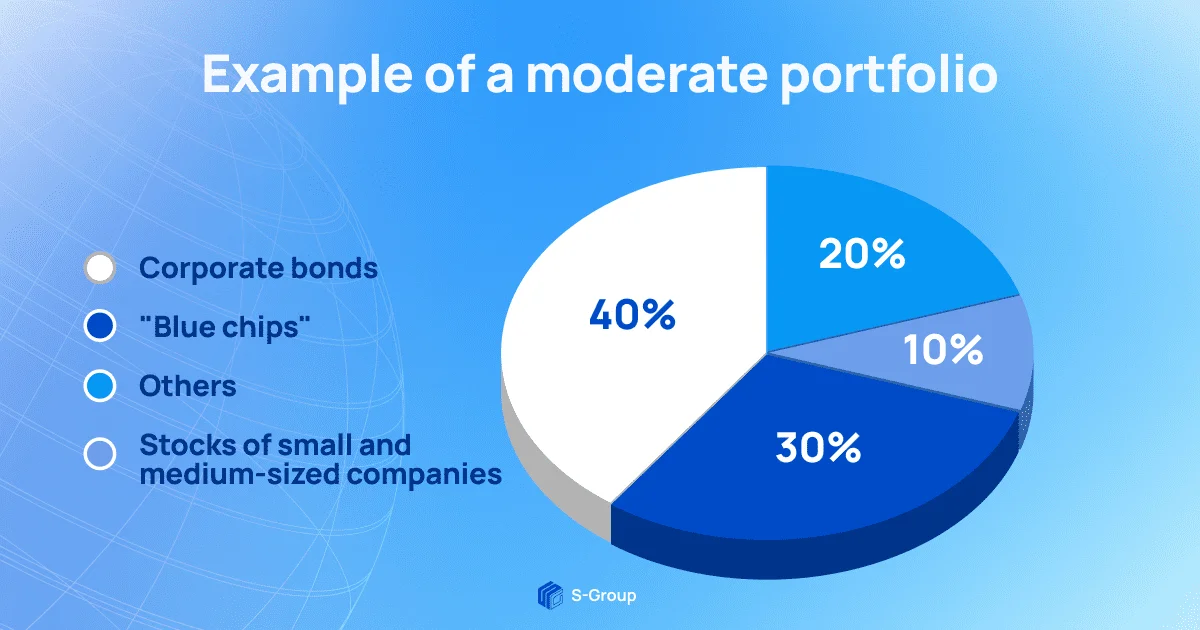
According to the timing of investments, a distinction is made between long-term, medium-term and short-term portfolios.
Long-term
Formed for a period of five years or more, they are focused on generating income through dividends and a percentage of the company's profits. This type of portfolio involves the purchase of shares of well-known and stable companies, as well as long-term bonds.
Midterm
Formed for a period of one to three years. As a rule, they contain dividend shares, assets of exchange-traded funds, and bonds. Investors profit from the difference in asset prices and dividends.
Short-term
Formed for one year or less with assets that can be monetized quickly. Generally, these are short-term bonds, stocks of promising start-ups, options and futures.
Why you need an investment portfolio
The main reason to create an investment portfolio is to minimize risk of loss through diversification. Investing money in one issuer's asset is risky because if the investor goes bankrupt or the exchange rate drops, he can lose everything. That's why it's more advantageous to create a diversified investment portfolio with different assets, which will create a “safety cushion” for the investor, minimize risk and preserve profitability.
Share
Interesting
Would you like to receive a digest of articles?
One email with the best articles of the week.
Sign up so you don't miss anything.